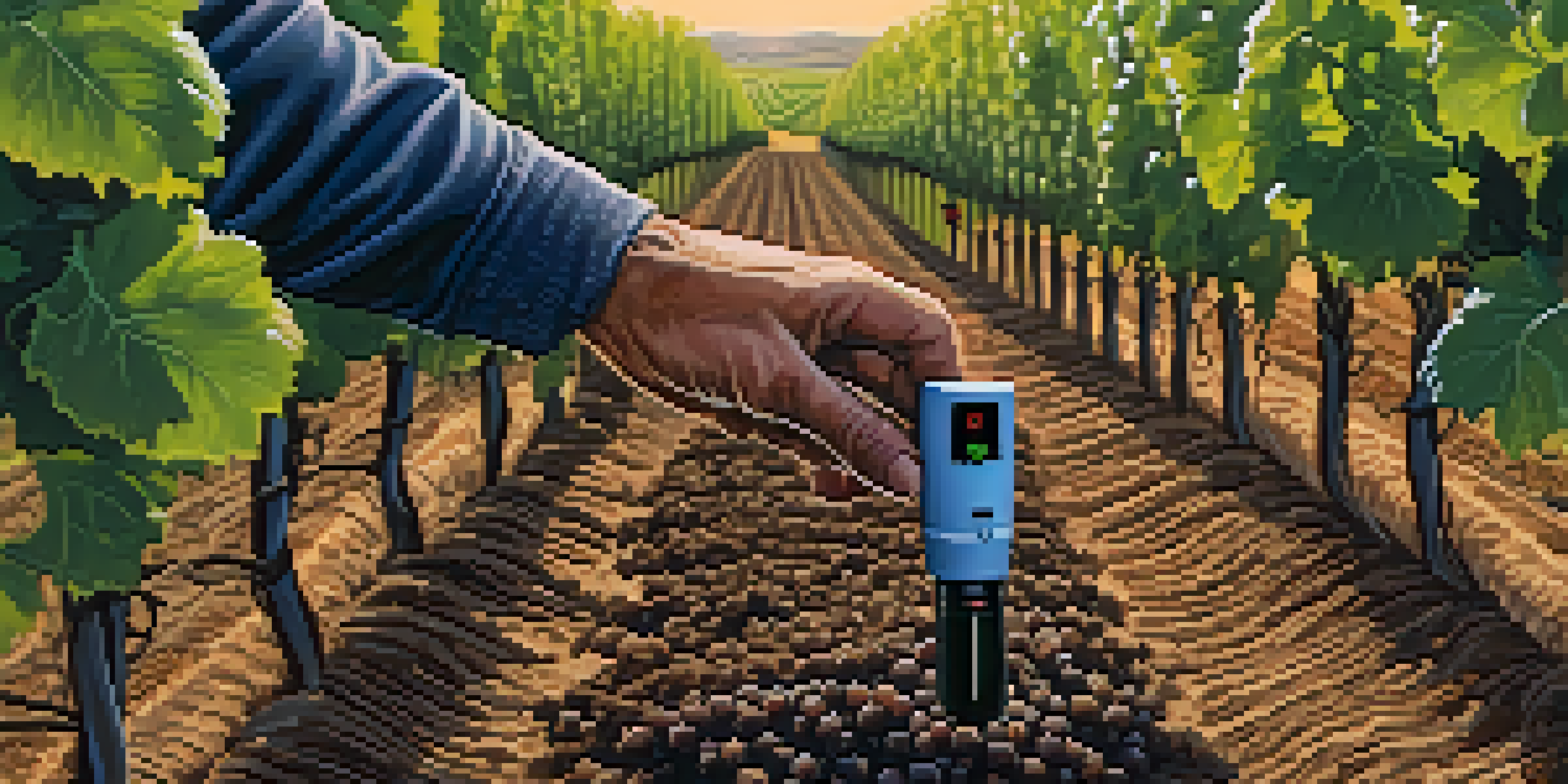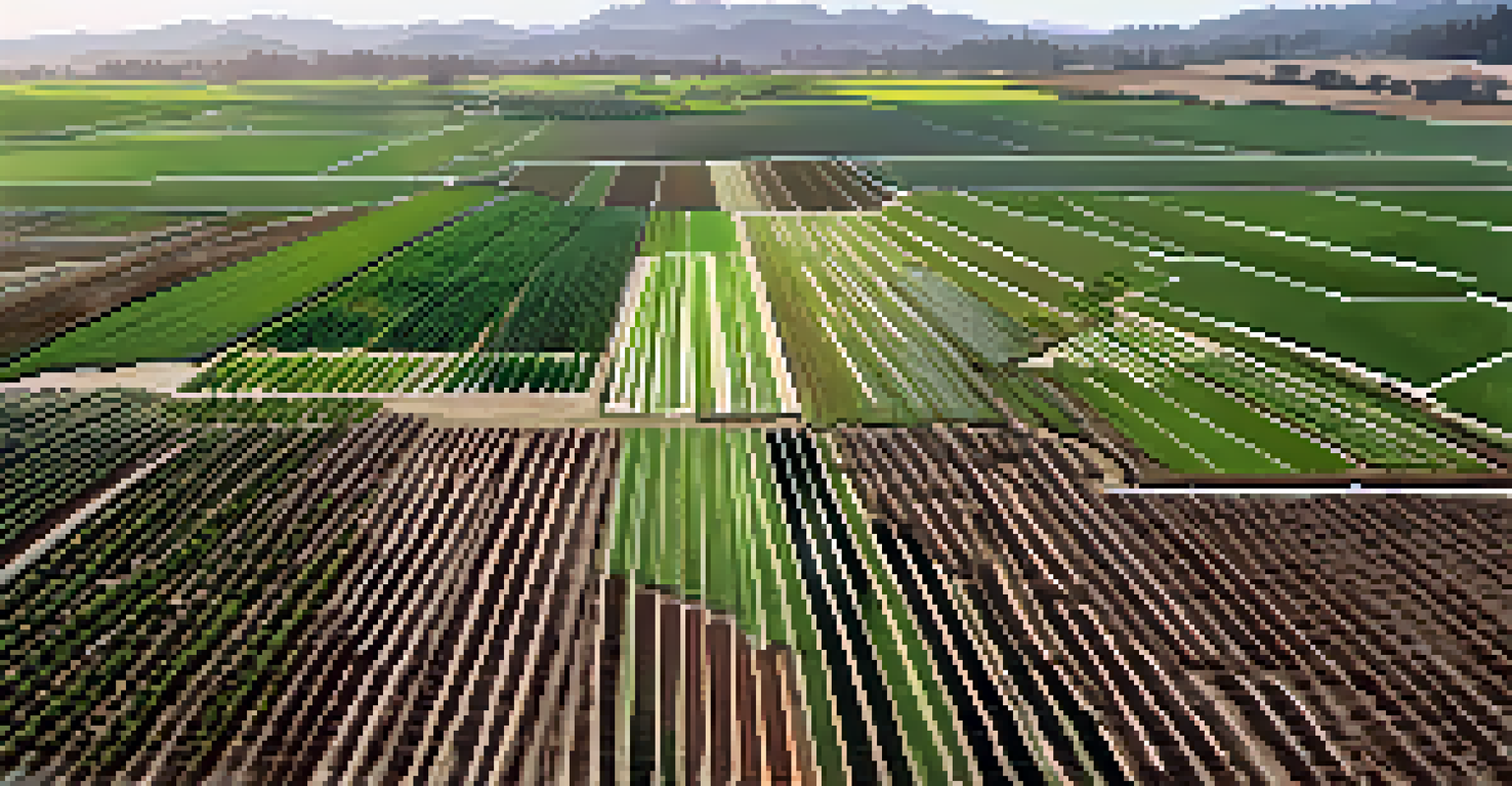The Impact of Irrigation on California's Agricultural Growth

Understanding California's Unique Agricultural Landscape
California is home to a diverse agricultural landscape, producing nearly half of the country’s fruits, vegetables, and nuts. This impressive output is largely due to the state's varied climate and geography, which can be both a blessing and a challenge. With limited rainfall in certain regions, farmers rely heavily on irrigation to sustain their crops and ensure consistent yields. By understanding the intricacies of California's agricultural needs, we can appreciate the role irrigation plays in this vital sector.
Irrigation is the lifeblood of agriculture, especially in regions where water is scarce. It's essential to use it wisely to ensure sustainable farming practices.
The state's Central Valley, for instance, is one of the most fertile agricultural regions in the world, but it also faces significant water scarcity issues. The reliance on irrigation systems has allowed farmers to cultivate high-value crops, boosting the economy and providing jobs. However, the dependence on these systems raises concerns about water usage and sustainability, making it essential to explore how irrigation practices can evolve to meet future demands.
Moreover, California's agriculture is not just about quantity; it also emphasizes quality. Many farmers use advanced irrigation technologies to optimize water use while enhancing crop quality. This balance is crucial in maintaining California’s reputation as a leading agricultural state while also being mindful of its environmental impact.
The Evolution of Irrigation Techniques in California
Irrigation in California has come a long way from simple methods to advanced technologies that maximize efficiency. Early farmers relied on surface irrigation, where water flowed through furrows and ditches, but this method was often wasteful. As agricultural demands grew, so did the need for more efficient systems, leading to the introduction of drip irrigation and sprinkler systems. These innovations have not only reduced water waste but also improved crop yields significantly.

Drip irrigation, for example, delivers water directly to the plant roots, minimizing evaporation and runoff. This system has become increasingly popular, especially in high-value crops like almonds and grapes. By using this targeted approach, farmers can conserve precious water resources while ensuring their crops receive the optimal amount of moisture.
California's Ag Needs Efficient Irrigation
California's diverse agriculture relies heavily on efficient irrigation practices to sustain its crops amid water scarcity challenges.
Moreover, the integration of technology such as soil moisture sensors and automated irrigation systems has revolutionized how water is managed. Farmers can now monitor conditions in real-time, adjusting their irrigation practices based on current weather patterns and soil needs. This adaptability is crucial in a state that frequently faces droughts and fluctuating water availability.
The Economic Benefits of Efficient Irrigation
Efficient irrigation practices have significant economic implications for California's agricultural sector. By optimizing water use, farmers can reduce operational costs and increase their profitability. For instance, crops that receive the right amount of water at the right time are more likely to thrive, leading to higher yields and better quality produce. This not only benefits the farmers but also supports the broader economy by providing jobs and contributing to local communities.
The future of farming depends on our ability to adapt to climate change and innovate with technologies that help us conserve water.
Furthermore, with California's agricultural industry generating billions of dollars annually, the impact of irrigation extends beyond individual farms. A well-irrigated farm can produce a consistent supply of goods for markets, ensuring food security and stabilizing prices. Consumers also benefit from a steady flow of fresh fruits and vegetables, making irrigation an essential component of California’s economy.
In addition, efficient irrigation practices can attract investments in agriculture. As sustainability becomes a priority for consumers and investors alike, farms that implement water-saving technologies may find themselves at a competitive advantage. This push for efficiency not only supports economic growth but also aligns with the increasing demand for environmentally responsible practices.
Challenges Facing California's Irrigation Systems
While irrigation has profoundly impacted California's agriculture, it also faces several challenges. One of the most pressing issues is water scarcity, exacerbated by prolonged droughts and climate change. Farmers are often forced to navigate complex regulations regarding water use, which can limit their ability to irrigate effectively. These constraints can lead to tough decisions about which crops to plant and how to allocate resources.
Additionally, outdated infrastructure can hinder the efficiency of irrigation systems. Many canals and pipelines have suffered from years of neglect, leading to leaks and water loss. Investing in modernizing this infrastructure is crucial for maximizing the effectiveness of irrigation and ensuring that farmers can access the water they need.
Tech Innovations Transform Irrigation
Advancements in technology, such as drip irrigation and soil moisture sensors, are revolutionizing how farmers manage water resources.
Moreover, the environmental impact of excessive irrigation cannot be overlooked. Over-irrigation can lead to soil degradation and water quality issues, such as salt buildup and runoff pollution. As farmers strive to balance productivity with sustainability, finding solutions to these challenges is critical for the future of California's agriculture.
The Role of Technology in Future Irrigation Practices
As we look to the future, technology will play a pivotal role in shaping California's irrigation practices. Innovations like precision agriculture allow farmers to use data analytics to make informed decisions about irrigation schedules and water usage. This technology helps farmers apply the right amount of water at the right time, reducing waste and enhancing crop performance.
Furthermore, advancements in remote sensing and satellite imagery provide valuable insights into soil moisture levels and crop health. By utilizing these tools, farmers can respond quickly to changing conditions, ensuring their crops receive adequate irrigation without overwatering. This proactive approach is essential, especially in a state where water resources are increasingly scarce.
Additionally, emerging technologies such as sustainable water recycling systems can help mitigate water scarcity issues. By treating and reusing wastewater for irrigation, farmers can reduce their reliance on freshwater sources. This not only enhances sustainability but also supports the resilience of California’s agricultural sector in the face of ongoing environmental challenges.
Community Initiatives for Sustainable Irrigation
Community initiatives are essential for promoting sustainable irrigation practices in California. Local organizations and agricultural groups often collaborate to develop programs that educate farmers about efficient water management techniques. These initiatives can include workshops, training sessions, and resources that empower farmers to adopt sustainable practices.
One example of such an initiative is the California Irrigation Management Information System (CIMIS), which provides real-time data on weather and soil conditions. By utilizing this information, farmers can make informed decisions about when and how much to irrigate, ultimately leading to more efficient water use. These collaborative efforts help foster a sense of community while addressing the pressing issue of water scarcity.
Community Efforts for Water Sustainability
Local initiatives and collaboration among farmers are essential for promoting sustainable irrigation practices and addressing water scarcity.
Moreover, community involvement can lead to the development of local water-sharing agreements, where farmers work together to manage their water resources. By pooling resources and sharing data, they can create a more sustainable irrigation framework that benefits everyone involved. This collective approach not only strengthens the agricultural community but also promotes long-term sustainability.
The Future of Irrigation and California's Agriculture
Looking ahead, the future of irrigation in California’s agriculture will likely be defined by adaptability and innovation. As climate change continues to impact weather patterns, farmers will need to embrace new technologies and practices to ensure their crops thrive. This may involve investing in more resilient irrigation systems and diversifying crop choices to suit changing environmental conditions.
Additionally, policymakers and agricultural leaders will play a crucial role in shaping the future of irrigation. By promoting policies that support sustainable water management practices, they can help secure the long-term health of California's agricultural sector. This collaboration between farmers, policymakers, and communities is vital for navigating the challenges ahead.

Ultimately, the impact of irrigation on California's agricultural growth will depend on a collective commitment to sustainability and innovation. By working together, embracing new technologies, and prioritizing responsible water use, California can continue to thrive as a leader in agriculture, ensuring food security for generations to come.